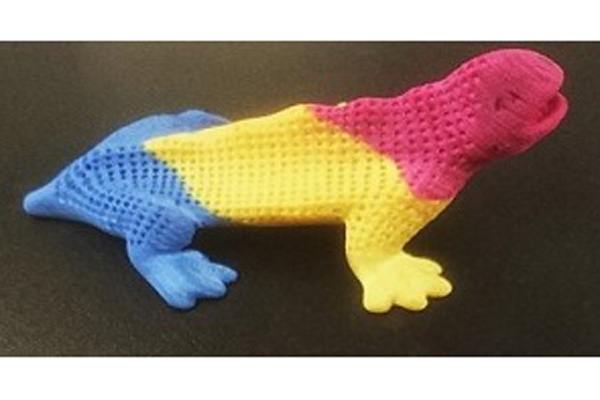
Researchers overcome colour limitations in 3D printing
MADRID, August 2, 2018
Spain-based ICFO, a fast growing research institution, said its researchers have overcome colour limitations in 3D powder sintering.
In recent years, selective powder sintering for 3D printing has taken off as an increasingly affordable solution for manufacturing made-to-order elements of almost any shape or geometry, impacting multiple sectors of industry.
In a paper recently published in NanoLetters, ICFO researchers Alexander Powell, Alexandros Stavrinadis, and Ignacio de Miguel, led by ICREA Professors at ICFO Gerasimos Konstantatos, and Romain Quidant report on a solution for overcoming colour restrictions in this method using plasmonic nanoparticles.
Selective powder sintering involves heating a bed of powder (such as polyamide, PA12) to just below its melting point, using an IR light source to selectively melt a cross section of the powder, then adding more powder and repeating to form a 3D object, it added.
To reduce costs and increase printing speed, a photothermal sensitizer is often added to the powders. These are typically carbon-based, with a strong broadband absorption, and adding them to the polymer powders increases the conversion of incident light to heat, allowing for greater print speeds.
In fact, techniques for powder sintering using such sensitizers such as high speed sintering, and multijet fusion have demonstrated 3D printing speeds that can rival small batch production via established industrial methods. However, as the sensitizers are carbon-based, these can only produce black or grey objects. To create white or colourful prints, visibly transparent equivalents are needed.
ICFO researchers have addressed this problem by designing resonant photothermal sensitizers made of plasmonic nanoparticles that strongly absorb in the near-infrared, while only minimally interacting with visible light.
Gold nanorods were coated with silica before being mixed with polyamide powders to create stable colorful nanocomposite powders.
At resonance, these composites showed greatly improved light-to-heat conversion compared with equivalent composites using the industry standard carbon black as a sensitizer and could be sintered using low-power light sources. Furthermore, they appear much whiter and can produce brightly coloured 3D objects when mixed with dyes.
These new results open a new route to utilise plasmonic nanoparticles to produce colourful and functional 3D-printed objects, a key advance for any field where prints must be beautiful as well as functional, it stated. – TradeArabia News Service








